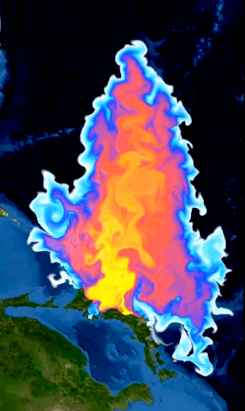Radiation reaches US, risk does not follow
 Radiation from the 2011 Fukushima nuclear disaster has made it to a North American shoreline, but researchers say it does not pose a significant threat to human or marine life.
Radiation from the 2011 Fukushima nuclear disaster has made it to a North American shoreline, but researchers say it does not pose a significant threat to human or marine life.
Woods Hole Oceanographic Institution scientist Ken Buesseler led a team that discovered trace amounts of Cesium-134 and Cesium-137 on February 19 off the coast of Vancouver Island in Canada’s British Columbia.
“Radioactivity can be dangerous, and we should be carefully monitoring the oceans after what is certainly the largest accidental release of radioactive contaminants to the oceans in history,” Buesseler said in a statement.
But the levels are extremely low.
For comparison, swimming in the contaminated Vancouver Island water every day for a year would expose a person to a level of radiation about a thousand times smaller than a single dental X-ray, Woods Hole said.
The water samples contained 1.4 Becquerels (a unit of radioactivity) per cubic metre of Cesium-134 and 5.8 Becquerels per cubic metre of Cesium-137.
Samples taken from the waters around Japan shortly after the 2011 disaster showed radiation at a level of 50 million Becquerels per cubic metre.
Authorities around the world have been monitoring the fluid fallout of the Fukushima nuclear plant meltdown, the world’s worst nuclear disaster since Chernobyl in 1986.
The Woods Hole team relies on a crowd-funding citizen-science initiative known as "Our Radioactive Ocean" to collect samples, because no US federal agency is responsible for monitoring radiation in coastal waters.
The results are publicly available on the website OurRadioactiveOcean.org
Buesseler said it is likely that similarly low cesium levels will gradually reach other North American shores, possibly extending along the U.S. West Coast.
“Predicting the spread of radiation becomes more complex the closer it gets to the coast,” Buesseler said.







 Print
Print